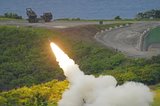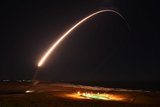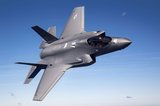3D-printed component on Trident missile
A 3D-printed missile component, a connector backshell, has flown on three of Lockheed Martin's Trident II D5 fleet ballistic missiles during US Navy testing, the company announced on 18 March.
The connector backshell is made of aluminium alloy, measures around an inch and protects cable connectors in the missile. Lockheed Martin used fully-digital processes to design and fabricate the connector backshell in half the time of traditional methods.
In the tests - part of a Follow-on Commander’s Evaluation Test of the Trident Strategic Weapon System - the navy launched the unarmed missiles in the Atlantic Ocean from a submerged submarine. The missiles were converted into test configurations using kits produced by Lockheed Martin that contain range safety devices and flight telemetry instrumentation.
Eric Scherff, vice president of fleet ballistic missile programs, Lockheed Martin Space Systems, said: ‘These tests demonstrate the readiness and reliability of this crucial system that protects what matters most for the nation. The Trident strategic weapon system stands guard every minute of every day, thanks to the dedication and forward thinking of the US Navy program office, the submarine crews and the industry team.’
The Trident II D5 missile is deployed aboard US Navy Ohio-class and UK Royal Navy Vanguard-class submarines to deter nuclear aggression. The three-stage ballistic missile can travel a nominal range of 4,000 nautical miles and carry multiple independently targeted reentry bodies.
More from Defence Notes
-
![Taiwan approved for $11 billion weapon purchase from US]()
Taiwan approved for $11 billion weapon purchase from US
The US State Department’s approval of a multi-billion-dollar sale of weapons to Taiwan includes tactical mission networks equipment, uncrewed aerial systems, artillery rocket systems and self-propelled howitzers as well as anti-tank guided missiles.
-
![Ireland spells out $2.3 billion shopping list in five-year defence spending plan]()
Ireland spells out $2.3 billion shopping list in five-year defence spending plan
Ireland’s multi-annual investment in capital defence spending is set to rise from €300m in 2026 to €360m in 2029–2030 with major upgrades across land, air, maritime and cyber domains.
-
![Canada to deepen integration of multi-domain capabilities to strengthen its defences]()
Canada to deepen integration of multi-domain capabilities to strengthen its defences
The Canadian Department of National Defence has created new organisations to manage the procurement and integration of all-domain solutions and allocated US$258.33 million to strengthen production capacities.
-
![US National Security Strategy prioritises advanced military capabilities and national industry]()
US National Security Strategy prioritises advanced military capabilities and national industry
The 2025 NSS has emphasised investment in the US nuclear and air defence inventory and national industry, but it leaves multiple unanswered questions on how the White House will implement this approach.
-
![Canada set to look away from its neighbour and across the Atlantic for partners]()
Canada set to look away from its neighbour and across the Atlantic for partners
While non-EU UK struggles to join the Security Action for Europe initiative, which provides loans for defence programmes, Canada has become the first country outside Europe to get access – and did so for a nominal fee.
-
![NATO experiments with solutions to integrate networks, AI and uncrewed systems]()
NATO experiments with solutions to integrate networks, AI and uncrewed systems
During the latest edition of the NATO DiBaX, the alliance tested multiple capabilities to inform requirements for future efforts.


























